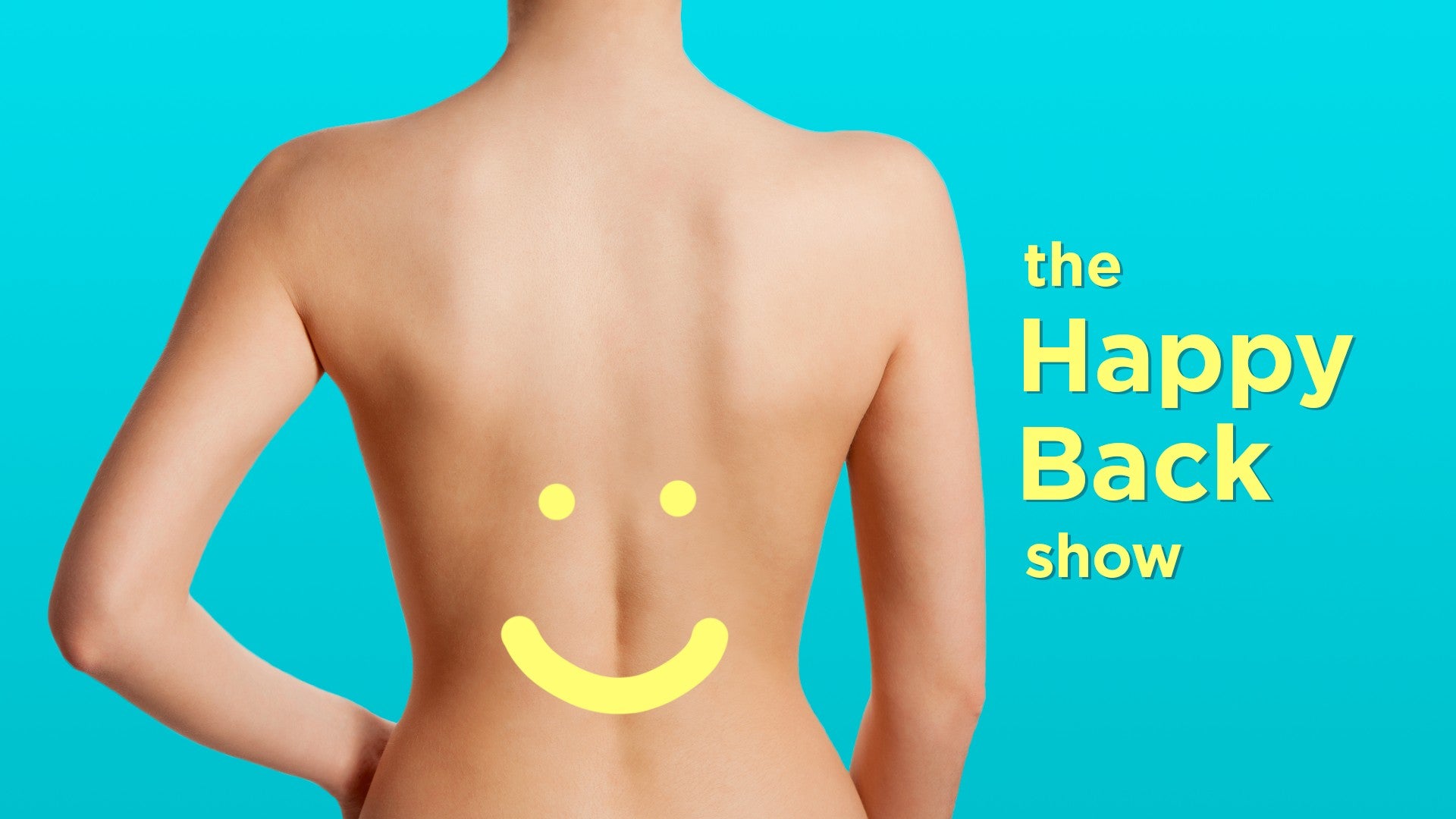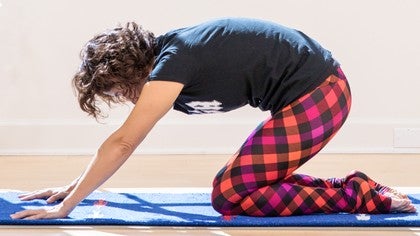Description
About This Video
Transcript
Read Full Transcript
(ocean waves) The breath is continually asking us to respond to its every-changing nature and where we end up getting into mischief or experiencing pain, is usually when we're resistant to the change. So we're gonna explore this a little bit by looking at the anatomy of the breath together. Looking and playing. Just to show what I mean, every time your body inhales, there's a response inside of the shoulders rolling back, the elbows up, the palms lifting, the pelvis rolling forward, the toes turning in, and a little bit of knee bend. Every time you exhale, there's a subtle external rotation of the hips, rounding of the back, rounding of the shoulders, and softening.
Just to look at that sideways. Every time you inhale, the booty goes back, the hips roll in a little bit, shoulders roll back and heart lifts. We usually call this hallelujah and every time you exhale, there's a response in the body of a little external rotation, rounding in the back, and the shoulders roll forward. We're luck that that's not so obvious, right? And yet, all you have to do is look at bodies to sort of see, within a person's life, whether they're closer to the inhale or closer to the exhale.
So for example, if you look at a child under three, generally he or she runs around belly forward, arms back, like "woohoo!" There's a sense of like, "I'm going for it." Generally, and this is a huge generalization, but your 190 year old grandfather, there's this rounding over, the toes are turned down, and there's a little bit like, "I'm on my way out of here." Okay, so life and just people, right? You know people that walk around in the shape of the inhale and you know people who walk around in the shape of the exhale also. There's a quality of the body that responds to an enthusiasm or a release. The play with pain is, more and more, we're understanding that pain is simply a result of lack of awareness and connection. Let's explore this together.
Stand and just be willing to be goofy with me. Okay? So feel yourself into the shape of the inhale. Let your arms come out to the sides. Soften the elbows.
Roll your shoulders back. We usually call this hallelujah. Shoulder blades come under a little bit. Bend the knees. Turn the toes in a little bit.
Stick your booty out, okay? And feel the quality of an inhale. Stay here as you exhale. And then feel it again. Inhale. And exhale.
Okay, nice. Now try this. Turn the toes out. Round a little bit in your back. Round your shoulders over. Feel the quality of an exhale.
First you've got to inhale. Then exhale. Do it again. Inhale. And exhale. Super nice.
Now let's move with it. Inhale. Turn the toes in, roll the shoulders back, lift up through the heart. Nice. And exhale.
Turn the toes out and round. Just be exaggerated about it. Inhale, toes turn in. Roll the pelvis forward, lift up. Exhale.
One more time. Inhaling. Nice. And exhaling. Beautiful. Come back into the shape of the inhale. And exhale.
Okay. So what does this have to do with back pain? Your diaphragm, which is one of your primary muscles of respiration, along with your intercostals, the little muscles in between your ribs. Your diaphragm doesn't just sit here underneath your fifth rib. She's got these tentacles of connective tissue that reach all the way down the spine deep into the region of the lower pelvis.
If we're willing to allow the breath to move us a little bit more. If you're willing to receive the whole breath and feel that in your body and feel the movement, and you're able to let the whole breath go, then all day long you'll be offering that willingness of response, that willingness to be wiggly with the life, because if you really look at nature, she's wiggly. She's not rigid. There's nothing in nature that's a straight line. That's our doing.
Let's do this together. Spread the toes wide. Stand. Let your hands find your lower back. Let your hands find your lower back. Close you eyes and just start to imagine.
Remember the movement you were making in the inhale. Remember that big, exaggerated hallelujah movement. Remember the movement in the exhale. Remember that rounding. Just a handful more moments here.
Just feel, see if you can start to sense, it's not easy, see if you can start to feel the responsiveness of the lower spine as you inhale. And as you exhale. Yeah, softer in the knees, softer in the eyes. Just a few more beats here. It's not an easy request.
We're making an effort. And we'll continue to play with this through the rest of our sequences. Relax your hands. Thanks for playing and really, truly, the willingness to look like a dork really does help low back pain. See you soon. Love.
The Happy Back Show: Low Back Pain
Comments
Thank you so much for sharing this insight.
I first watched the video a week or so ago and it has been such a revelation. I can sense a gentle dynamism to all the postures I have done since. And now I feel as if my spine lengthens with every in and out breath, even if it is sometimes only a tiny millimetre or two.
I am having such fun exploring all the new space and ease I have access to.
Thanks again
Mary
You need to be a subscriber to post a comment.
Please Log In or Create an Account to start your free trial.













